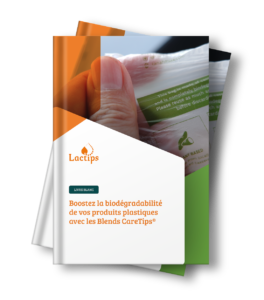Industrials using bio-based materials often encounter supply difficulties. Does this mean that bio-based materials are rare?
In this article, we will see that this is not the case. On the contrary, biomass is a considerable source of carbon that expands the application fields of bio-based materials!
Bio-based materials, what are we talking about?
According to the NF EN 16575 standard, a bio-based material is:
- Wholly or partly derived from biomass
- Of both animal and plant origin
- Typically derived from agricultural or forestry co-products
| Biomass : a broad definition
The sources of bio-based material are numerous because the concept of biomass encompasses “the mass constituted by all living beings present on the planet.” Therefore, while current bio-based materials are mostly of agricultural or forestry origin, any source of carbon of biological origin can be used in the production of bio-based materials: algae, organic waste, etc. |
Partially bio-based products
To be considered bio-based, a material may be partially composed of biomass-derived matter.
The bio-based portion varies depending on the products!
The “Bio-based Product” label has thus been created to certify materials that incorporate a significant proportion of bio-based content. Minimum thresholds are set by material families.
To determine the amount of renewable carbon contained in a material, a carbon 14 dating method is used (according to ASTM D6866, ISO 16620 standards, etc.).
The scarcity of bio-based materials is a myth!
According to a study1, the total biomass on Earth is estimated at 550 gigatonnes (GT) of carbon (GT C), with 450 GT C coming from plants alone.
But plants are not the only sources of biological carbon!
Indeed, microorganisms are also a very important source. Here is the distribution in GT of carbon:
- Bacteria: 70
- Fungi: 12
- Archaea (archaebacteria): 7
- Protists: 4
Finally, the animal kingdom should not be forgotten either, as it represents 2 GT C, mostly distributed among arthropods (1.2) and fish (0.7).
The biomass of the oceans2 only accounts for 1% of the total biomass. This is a surprising figure considering that the oceans cover 71% of the Earth’s surface!
If biomass is ubiquitous, then where does this apparent “scarcity” of bio-based materials come from, especially concerning bioplastics?
The issue of commercial availability of bio-based materials
As detailed in another article, bio-based materials mainly suffer from a lack of commercial availability.
This situation is quite normal, as for the industry, these materials are relatively new. The bio-based sector is still young, and production capacities are not always in line with demands (BioPE, BPS, PHA, PLA, etc.).
The advantage of biomass is its availability since it is found all around us, unlike oil, whose reserves are unevenly distributed on Earth. To exploit biomass, it is therefore sufficient to search for relevant reserves and try to cultivate them!
This innovative approach, which is beginning to take root in minds, is the one undertaken by Lactips.
Finally, working with bio-based materials also means improving the economic resilience of one’s territory!
| A situation that will improve
The biopolymers industry is currently undergoing structuring, and production capacities are expected to triple within the next 5 years. According to a study conducted by European Bioplastics3, in 2023 the bioplastics industry was operating at full capacity, indicating strong demand. To meet this demand, “the global production capacity of bioplastics is expected to increase significantly, from approximately 2.18 million tonnes in 2023 to around 7.43 million tonnes in 2028.” |
Multiple deposits of bio-based materials
Various sources of biomass can be exploited to create bio-based materials. Here are some examples.
Food-origin biomass:
- Vegetables oils – soybean, palm, sunflower…
- Starch – corn, potato…
- Glucose – sugarcane, beet…
Non food-origin biomass:
- Lignocellulosic Biomass – Wood, wood co-products, agricultural waste…
- Non-Food Vegetable Oils – castor oil and waste from oil production…
Non-Food-Origin, Soilless Cultivable Biomass:
- Sugars
- Oils produced by microorganisms
- Municipal waste
Moreover, this list is far from exhaustive, as new materials will continue to enter the market, thanks to innovation and the multiple deposits of exploitable biomass!
Examples of innovation
- LACTIPS: natural material based on proteins
- Chitosan4: polymer based on chitin from shellfish
- Agarose5: polymer derived from agar-agar, hence from marine algae
The numerous industrial applications of bio-based materials
Regulatory developments (AGEC, EGALIM) have promoted the development of bio-based materials and their use in the food packaging sector in particular.
- BioPET: bio-based PET bottle packaging
- BioPE: shampoo bottles, garbage bags
- PBS/PBSA/PBAT: flexible packaging
- Etc.
But the packaging sector is not the only one interested, and industrial applications are multiplying or under study.
- PHA: cutlery, toys, consumer products
- BioTPE: shoes, watch straps, sports articles
- BioPA – PA116: high-performance industrial parts (aerospace, automotive, medical, etc.)
Conclusion
Bio-based materials are not strictly rare in the literal sense; however, their availability is often problematic.
Fortunately, the situation is evolving in the right direction because the bio-based materials sector is undergoing significant development, and industrial opportunities are only going to increase!
Do you want to boost the biodegradability of your plastic products?
1 https://www.pnas.org/doi/10.1073/pnas.1711842115
2 https://www.fondationbiodiversite.fr/repartition-globale-de-la-biomasse-au-sein-de-la-biosphere
3 https://www.european-bioplastics.org/market/
4 https://www.ledevoir.com/environnement/542215/des-crustaces-qui-font-du-plastique
5 https://www.usinenouvelle.com/article/l-industrie-c-est-fou-une-designer-cree-du-bioplastique-a-partir-d-agar-agar.N796015
6 https://www.initial.fr/nouvelle-matiere-pa11-biosource/



